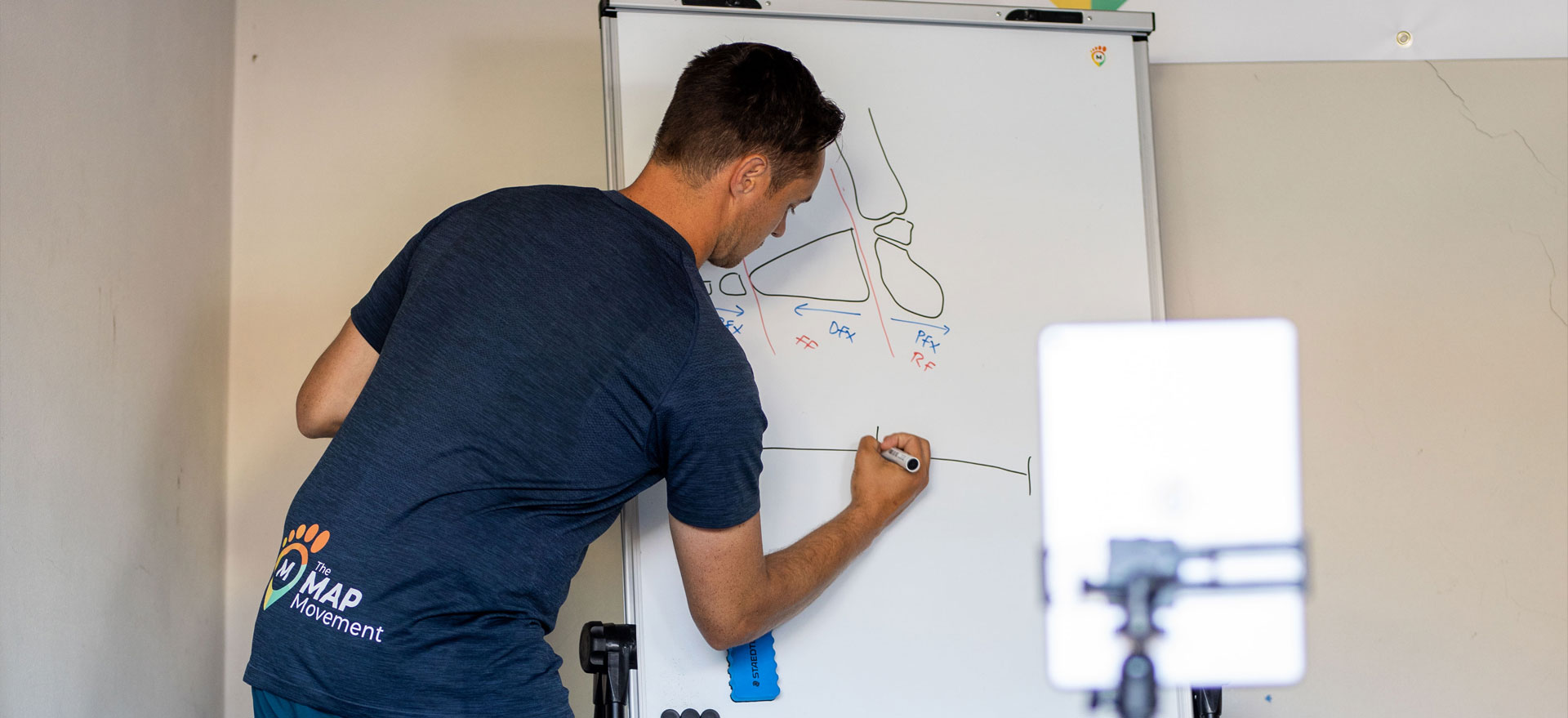The plantar fascia is a thick area of tissue that spans from the base of the heel to each of the 5 metatarsals (toes).
Plantar fasciitis is the term used when we have pain in this tissue on the sole of the foot. It is usually present under the heel and can be most painful in the mornings when getting up out of bed.
Have you ever wondered why it is most painful in the morning?
During the day we tend to be walking around loading the foot. This means the muscles in the foot get an opportunity with each step to try and lengthen and contract with the aid of gravity and your body weight.
The foot during gait (walking/running) should make two shapes.
A longer, flatter, wider shape (pronation) and a shorter, higher, narrower shape (supination).
If the joints in the foot ?? don’t move between the two shapes, the muscles can’t lengthen or contract fully. This means there is always a battle of tension in the foot.
So at night, when you aren’t loading the foot, this is where the tension becomes amplified meaning you wake up with a sore foot.
Being able to access both of these shapes (pronation and supination) is the base for pain free movement and saying goodbye to plantar fasciitis forever.
So Let’s look at foot position to start with,
At rest, do your feet point straight forwards?
Does one foot turn out to the side?Do both feet turn out to the side?
We can then look at your foot shape.
Do you have flat feet?
When the foot is stuck in a ‘flat foot’ shape, the tissue is being overstretched, causing the brain to send signals to contract the lengthened tissue.
Do you have high arches?
A high arch seems to be the glorified foot shape. However, when the foot is stuck in a high arch shape, the tissue cannot stretch causing the brain to send pain signals to the foot.
Do you have a neutral foot?
At rest, this could be the ideal shape. However, if your feet are rigid and tight, the tissue on the underside of the foot cannot lengthen and contract how it should.
There can be many combinations in your feet and how they are set-up is unique to you.
You may have one foot that is flat and the other has a high arch.
This could suggest you have one foot that pronates more than the other and a foot that supinates more than the other.
If this is the case, there will be a knock on affect through the entire body meaning you can rotate the spine more to one side than the other which can explain tight and stiff neck muscles, a painful shoulder on one side and even lower back pain.
Want to know how your feet are effecting your pain and performance?
Click the here to book your initial consultation


